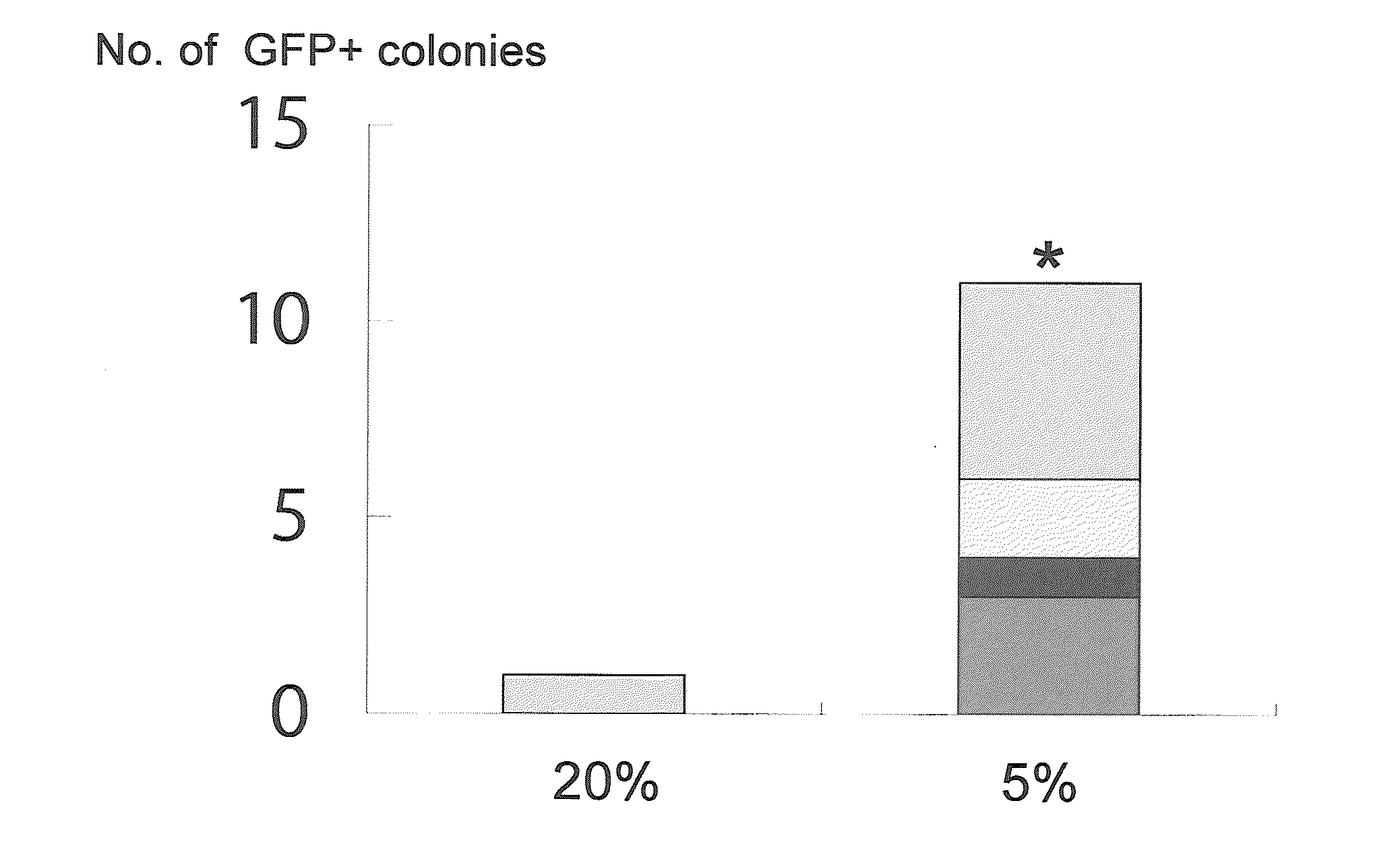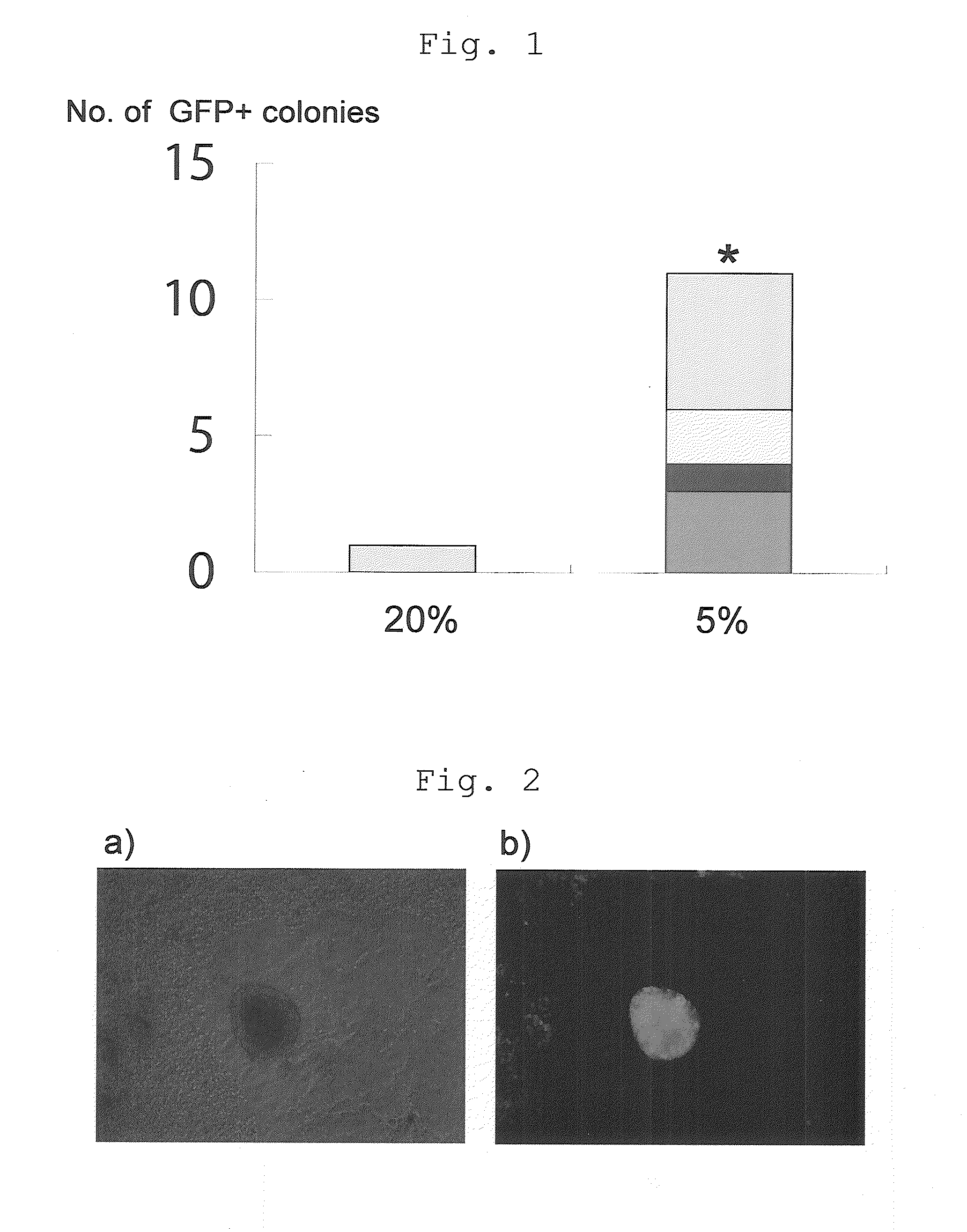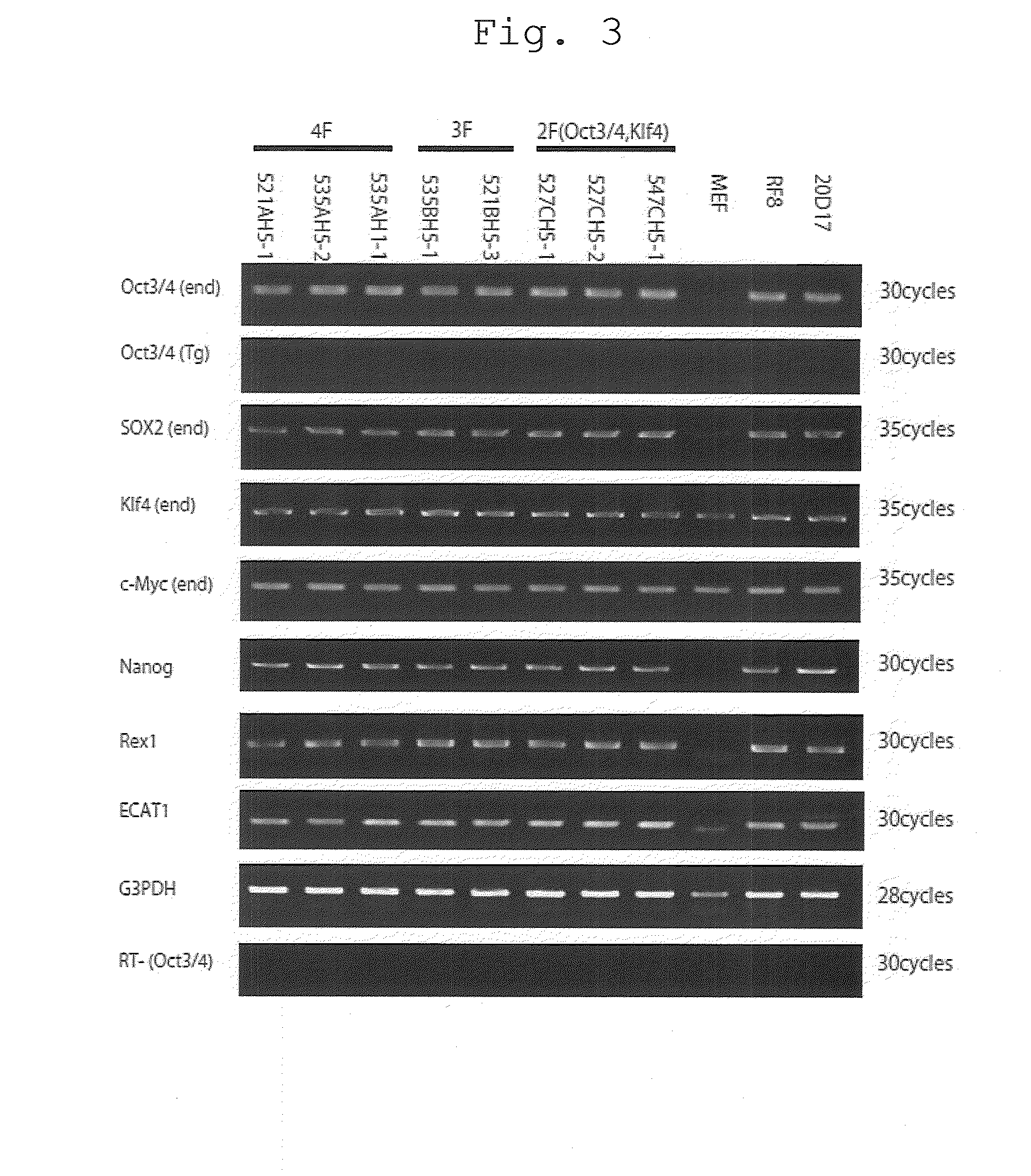Method of efficiently establishing induced pluripotent stem cells
- Summary
- Abstract
- Description
- Claims
- Application Information
AI Technical Summary
Benefits of technology
Problems solved by technology
Method used
Image
Examples
example 1
Effect (1) of the Hypoxic Culture Method on the Establishment of iPS Cells
[0108]Mice having a Nanog reporter were used as an experimental system. The Nanog reporter used was prepared by inserting the enhanced green fluorescent protein (EGFP) and puromycin resistant genes into the Nanog locus of a BAC (bacterial artificial chromosome) purchased from BACPAC Resources [Okita K. et al., Nature 448, 313-317 (2007)]. The mouse Nanog gene is expressed specifically in pluripotent cells such as ES cells and early embryos. The mouse iPS cells that have become positive for this reporter are known to be nearly equivalent to ES cells in terms of differentiation potential. Mouse embryonic fibroblasts (MEFs) and tail-tip fibroblasts (TTFs) obtained from a Nanog reporter mouse having this Nanog reporter [Okita K. et al., Nature 448, 313-317 (2007)] were transfected by means of retroviruses to establish iPS cells, and colonies expressing EGFP from the Nanog reporter were counted to evaluate the effi...
example 2
Effect (2) of the Hypoxic Culture Method on the Establishment of iPS Cells
[0119]An experiment was performed to determine whether the hypoxic culture method was effective with introduction of the two genes Oct3 / 4 and Klf4 alone. The experiment used MEFs from the same Nanog reporter mouse as in Example 1. In the same manner as Example 1, retroviral expression vectors (pMXs-Oct3 / 4, pMXs-Klf4) were infected to the MEFs. On day 4 after the infection, 1×105 cells of the MEFs were sown to a 100 mm dish having feeder cells sown in advance. Thereafter every 2 days, the ES cell culture medium was replaced with a fresh supply.
[0120]Between days 5 and 14 after the infection, the cells were cultured in an incubator (Thermo Scientific) set at a normal oxygen concentration (20%) or a low oxygen concentration (5%). The culture was continued, without drug selection, until day 28, when GFP-positive colonies were counted. The results are shown in FIG. 1. Four independent experiments were performed. Wh...
example 3
Expression of Markers for Undifferentiated State in Mouse iPS Cells
[0122]The expression of markers for undifferentiated state in the MEF-derived iPS cells established in Examples 1 and 2 was examined by RT-PCR analyses using the Rever Tra Ace kit (Takara). The sequences of the primers used are shown by SEQ ID NO:1-18. The results of the RT-PCR are shown in FIG. 3.
[0123]The iPS cells established with introduction of four genes (Oct3 / 4, Klf4, Sox2, c-Myc), three genes (Oct3 / 4, Klf4, Sox2), or two genes (Oct3 / 4, Klf4) by cell culture at low oxygen concentrations (5%, 1%) all expressed genes that are expressed specifically in ES cells, i.e., Oct3 / 4, Sox2, Klf4, c-Myc, Nanog, Rex1, and ECAT1, the amounts expressed being equivalent to those in mouse ES cells (RF8) and iPS cells established with four genes in the past [20D17: Nature, 448, 313-317 (2007)]. Because no expression of the Oct3 / 4 gene introduced (Oct3 / 4(Tg)) was observed, it was demonstrated that silencing occurred. Based on the...
PUM
| Property | Measurement | Unit |
|---|---|---|
| Fraction | aaaaa | aaaaa |
| Fraction | aaaaa | aaaaa |
| Fraction | aaaaa | aaaaa |
Abstract
Description
Claims
Application Information
 Login to View More
Login to View More - R&D
- Intellectual Property
- Life Sciences
- Materials
- Tech Scout
- Unparalleled Data Quality
- Higher Quality Content
- 60% Fewer Hallucinations
Browse by: Latest US Patents, China's latest patents, Technical Efficacy Thesaurus, Application Domain, Technology Topic, Popular Technical Reports.
© 2025 PatSnap. All rights reserved.Legal|Privacy policy|Modern Slavery Act Transparency Statement|Sitemap|About US| Contact US: help@patsnap.com



